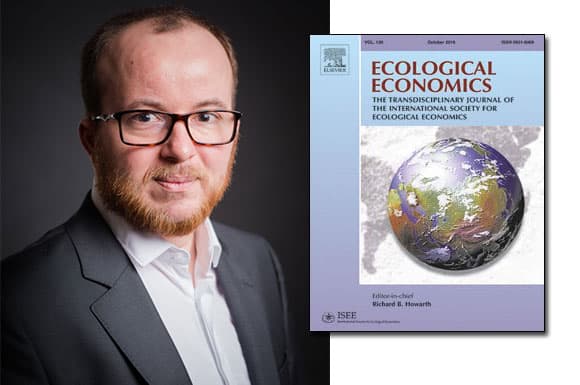The hijacking of the bioeconomy: Nicolas Béfort publishes in a CNRS tier 1 journal
Published on 02/25/2019
Thematics :
The hijacking of the bioeconomy: Nicolas Béfort publishes in a CNRS tier 1 journal
Published on 02/25/2019
“The Hijacking of the Bioeconomy”, an article by Nicolas Béfort, professor in the NEOMA Business School Finance Department and Chair in Industrial Bioeconomy, was published in January 2019 in Ecological Economics, a CNRS tier 1 journal covering sustainable and environmental economics and presenting a wide range of perspectives and methods.
The bioeconomy raises the question of the great transition towards the use of biomass (from agriculture, forests, the sea, or organic waste) to replace fossil resources in materials, energy, and chemistry. It could simply lead to the emergence of a new sector, or provide a tool for sustainable transition. This article helps to frame debate over the bioeconomy, not by attempting to define it, but by highlighting three types of bioeconomy. Each one of them proposes a different form of sustainability. The article then asks which type of bioeconomy we should favour and which public policies we should develop.
Interview with Nicolas Béfort
The title of your article is somewhat provocative…
Nicolas Béfort: We talk about hijacking, because the term bioeconomy was coined in the 1970s by Nicholas Georgescu-Roegen. He was a mathematician and economist, and is famous for his studies of the relationship between economics and the environment. His perspective was sustainability oriented. Yet today, the science and biomass oriented approaches tend to dominate.
Bioeconomy has also become a fashionable word when dealing with the problems of ecological transition and the role of economics in this transition.
So, it is important to describe and analyse what each of the three approaches encompasses.
You decided to take as the starting point for your study “what happens” rather than “what should happen.” This is a new way to tackle the topic.
N.B.: Indeed, the stage of our study was that of defining what the bioeconomy is. The social and human science literature on the bioeconomy mostly focuses on defining what a “good” bioeconomy is, without considering the dynamics at play. In our opinion, this is a mistake. So, our article takes a narrative approach, identifying and then comparing the three major definitions of the bioeconomy currently used: sustainability oriented, science oriented, and biomass oriented.
This issue of definition is a key research area for the NEOMA BS Chair in Industrial Bioeconomy. Our objective is also to make the bioeconomy a subject of investigation.
Your article seems to call for a follow-up…
N.B.: one of the conclusions of our study is that if you want to develop a bioeconomy, you can do so in three different ways. And that each type of bioeconomy corresponds to a different type of public policy.
The aim of our next study will be to highlight how these three approaches to Bioeconomy can complement each other, as demonstrated at the European Centre for Biotechnology and the Bioeconomy (CEBB, in Pomacle-Bazancourt), of which the NEOMA Business School Bioeconomy Chair is a member.
Indeed, the three definitions of the bioeconomy are not exclusive, they are developing in parallel, and they can be combined. And this combination is an issue that deserves investigation.
>Article available on line: The Hijacking of the Bioeconomy
By F.-D. Vivien, M. Nieddu, N. Befort, R. Debref, M. Giampietro. Paper edition appearing shortly: volume 159, May 2019, pp 189-197.
>Find out more about the NEOMA Business School Bioeconomy Chair

